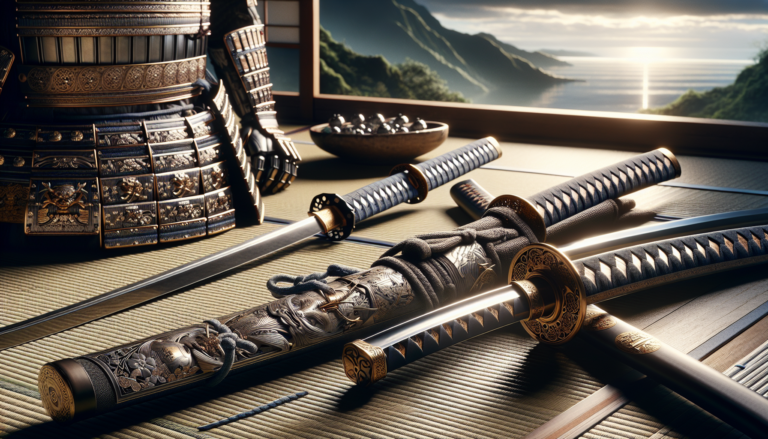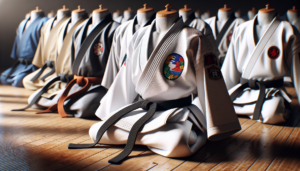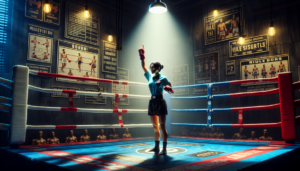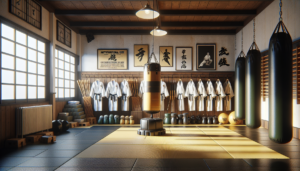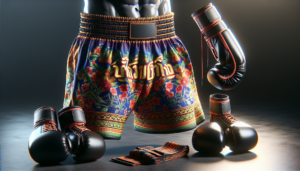The samurai, the elite military force of feudal Japan, were renowned for their exceptional martial arts skills and unwavering dedication to their craft. Their fighting style, honed over centuries of warfare and training, encompassed a wide range of techniques and weapons that made them formidable warriors on the battlefield. This article delves into the intricacies of the samurai fighting style, exploring its key techniques, weaponry, historical context, and lasting influence on modern martial arts.
Introduction to Samurai Fighting Style
The Role of Samurai in Feudal Japan
In feudal Japan, the samurai class played a pivotal role as the military nobility, serving their lords (daimyo) with utmost loyalty and bravery. Their primary duty was to protect their lord’s interests, both on and off the battlefield. Samurai were not only skilled warriors but also embodied the virtues of honor, discipline, and self-sacrifice, adhering to a strict code of conduct known as Bushido.
The samurai’s way of life revolved around martial arts training and mastery of various weapons. From a young age, samurai children were trained in the art of warfare, learning to wield swords, spears, and bows with deadly precision. This rigorous training prepared them for the challenges they would face as warriors, instilling in them the courage and fortitude necessary to overcome any obstacle.
The Evolution of Samurai Fighting Techniques
Over time, the samurai fighting style evolved, adapting to the changing landscape of warfare in Japan. During the early feudal period, the primary focus was on mounted archery (yabusame) and spearmanship (sojutsu). However, as battles became more infantry-based, the emphasis shifted towards swordsmanship (kenjutsu) and close-quarters combat.
The development of samurai fighting techniques was closely tied to the rise of various martial arts schools, known as ryu-ha. These schools, each with their unique philosophies and methods, specialized in different aspects of combat, such as swordsmanship, spearmanship, archery, and unarmed techniques. Samurai would often train in multiple schools to broaden their skill set and gain a competitive edge on the battlefield.
One of the oldest and most influential schools was the Tenshin Shoden Katori Shinto-ryu, founded in the 15th century. This school emphasized the mastery of various weapons, including the sword, spear, and bo staff, as well as unarmed techniques. Other notable schools that shaped the samurai fighting style include the Nen Ryu, Kage Ryu, Takenouchi Ryu, Kashima Shinto Ryu, and Shinkage Ryu, each contributing unique techniques and strategies to the samurai’s arsenal.
Key Techniques in Samurai Fighting Style
Kenjutsu: The Art of Swordsmanship
Kenjutsu, the art of the sword, was the cornerstone of the samurai fighting style. The samurai’s primary weapon was the katana, a long, curved sword renowned for its exceptional sharpness and cutting ability. Kenjutsu techniques focused on precision, speed, and efficiency, emphasizing the importance of proper stance, grip, and blade control.
Fundamental kenjutsu techniques included the two-handed grip, edge-striking, and nuki-uchi (drawing and cutting simultaneously). Samurai would train extensively in kata (pre-arranged forms) to perfect their movements and develop muscle memory. Footwork and body positioning were critical aspects of kenjutsu, as they enabled the samurai to generate power and maintain balance while delivering strikes.
Notable kenjutsu techniques included:
- Kesagiri: A diagonal downward cut from the shoulder to the opposite hip
- Kirikaeshi: Repeated alternating diagonal cuts
- Chiburi: A technique for flicking blood off the blade
- Noto: Sheathing the sword smoothly
Iaido: The Art of Drawing the Sword
Iaido, the art of drawing the sword, was another essential component of the samurai fighting style. This martial art focused on the quick and smooth drawing of the sword from its scabbard, emphasizing the importance of mental clarity and decisiveness. Iaido techniques were designed to enable the samurai to respond swiftly to sudden attacks and engage the enemy in close quarters.
One of the most renowned iaido schools was the Eishin-ryu, which incorporated both sitting and standing techniques. The Muso Jikiden Eishin-ryu style, in particular, emphasized the importance of simultaneous drawing and cutting, known as nuki-uchi. This technique allowed the samurai to dispatch an opponent in a single, fluid motion.
Iaido training involved practicing kata with a blunt wooden sword (bokken) or an unsharpened metal sword (iaito) to minimize the risk of injury. Through repetition and refinement, samurai would develop the speed, precision, and mental focus necessary to execute iaido techniques effectively in real combat situations.
Hyoho Niten Ichi-ryu: Dual Sword Technique
While most samurai focused on mastering the use of a single sword, some developed specialized techniques involving multiple weapons. One of the most famous examples is the Hyoho Niten Ichi-ryu, a style created by the legendary swordsman Miyamoto Musashi in the 17th century.
Hyoho Niten Ichi-ryu emphasized the use of two swords – a long sword (katana) and a short sword (wakizashi) – in tandem. Musashi believed that using two swords provided a strategic advantage, allowing the samurai to attack and defend simultaneously. The style focused on fluid, coordinated movements, with the swords working in harmony to overwhelm the opponent.
Training in Hyoho Niten Ichi-ryu involved mastering a series of two-sword kata, as well as engaging in sparring with wooden swords to develop timing, distance control, and situational awareness. The style also incorporated unarmed techniques, such as grappling and striking, to provide a well-rounded skill set for close-quarters combat.
Weapons Used in Samurai Fighting Style
The Katana: The Primary Weapon
The katana, a long, curved sword, was the primary weapon of the samurai. Forged using a complex process involving repeated folding and hammering of high-carbon steel, the katana was renowned for its exceptional sharpness, durability, and cutting ability. The sword’s design allowed for swift, precise cuts, making it an ideal weapon for close-quarters combat.
The katana was not only a weapon but also a symbol of the samurai’s status and honor. Samurai would often give their swords names and treat them with the utmost respect, considering them an extension of their own soul. The art of drawing, cutting with, and sheathing the katana was an integral part of the samurai’s martial training, as exemplified by the disciplines of kenjutsu and iaido.
The Wakizashi: The Companion Sword
In addition to the katana, samurai would often carry a shorter sword called a wakizashi. This companion sword, typically between 30 and 60 cm in length, served as a backup weapon and was used for close-quarters combat, especially in indoor settings where the longer katana might be cumbersome.
The wakizashi was also employed in the ritual of seppuku, a form of honorable suicide that samurai would perform to avoid capture, preserve their honor, or follow their lord in death. The wakizashi’s shorter length made it suitable for this solemn purpose.
Together, the katana and wakizashi formed the daisho, the “big-little” pair of swords that symbolized the samurai’s status and readiness for battle. The two swords were often worn together, with the katana on the left hip and the wakizashi on the right.
Other Weapons: Tanto, Yari, and Kyujutsu
While the katana and wakizashi were the most iconic weapons of the samurai, they were proficient in the use of various other arms, depending on the situation and their individual preferences. Some of these weapons include:
- Tanto: A short dagger, often used for close-quarters combat and as a utility knife
- Yari: A spear, used for thrusting and slashing, particularly effective against cavalry
- Naginata: A polearm with a curved blade, often used by foot soldiers and even samurai women
- Kyujutsu: The art of archery, a crucial skill for samurai, especially during the early feudal period
Samurai would train extensively with these weapons, mastering their unique techniques and strategies to gain a tactical advantage on the battlefield. The versatility of the samurai’s arsenal allowed them to adapt to various combat situations and enemy tactics.
Historical Context and Influence
The Edo Period and the Samurai
During the Edo period (1603-1868), Japan enjoyed a prolonged era of peace under the rule of the Tokugawa shogunate. As open warfare became less common, the role of the samurai began to shift. Many samurai became bureaucrats, administrators, or scholars, focusing more on the cultural and philosophical aspects of their heritage.
Despite this change, the samurai continued to train in martial arts, preserving their fighting techniques and passing them down through the generations. The Edo period saw the proliferation of numerous ryu-ha (martial arts schools), each with its own unique style and teachings. These schools not only maintained the samurai’s martial legacy but also contributed to the development of Japan’s rich cultural heritage.
Koryu: Traditional Martial Arts Schools
The term “koryu” refers to the traditional Japanese martial arts schools that predate the Meiji Restoration of 1868. These schools, many of which originated during the feudal era, focused on preserving the authentic techniques and philosophies of the samurai fighting style.
Koryu schools encompass a wide range of martial disciplines, including swordsmanship (kenjutsu), spearmanship (sojutsu), archery (kyujutsu), unarmed combat (jujutsu), and more. Each school has its own unique curriculum, teaching methods, and etiquette, reflecting the diverse tapestry of the samurai’s martial legacy.
Some notable koryu schools include:
- Tenshin Shoden Katori Shinto-ryu: One of the oldest extant schools, founded in the 15th century, specializing in various weapons
- Muso Jikiden Eishin-ryu: A renowned iaido school, emphasizing simultaneous drawing and cutting techniques
- Takenouchi-ryu: A comprehensive school teaching both armed and unarmed techniques, including jujutsu and naginatajutsu
- Yagyu Shinkage-ryu: A prestigious school known for its sophisticated swordsmanship techniques and strategic principles
Today, many koryu schools continue to operate, preserving the samurai’s martial heritage and passing down their techniques to new generations of dedicated practitioners. These schools serve as living repositories of the samurai fighting style, ensuring that the spirit and wisdom of the warrior class endure in the modern era.
Modern Practice and Legacy
Preservation of Samurai Techniques
In contemporary Japan, the samurai fighting style lives on through the practice of traditional martial arts. Many koryu schools, as well as modern derivatives such as kendo and iaido, continue to teach the techniques and principles of the samurai, albeit in a modified form suitable for the modern era.
Practitioners of these arts dedicate themselves to mastering the intricacies of the samurai fighting style, striving to embody the discipline, focus, and martial spirit of their predecessors. Through rigorous training, they seek to preserve the authentic techniques and philosophies of the samurai, ensuring that this rich martial heritage remains a living, breathing tradition.
In addition to physical training, modern practitioners also engage in the study of historical texts, such as the Book of Five Rings by Miyamoto Musashi, to gain insights into the strategic and philosophical aspects of the samurai fighting style. By immersing themselves in the wisdom of the past, they seek to apply the lessons of the samurai to their daily lives, cultivating character, resilience, and a strong sense of purpose.
Samurai Influence on Modern Martial Arts
The samurai fighting style has had a profound influence on the development of modern Japanese martial arts. Many of the techniques, principles, and philosophies that underpin these arts can be traced back to the teachings of the samurai.
Kendo, the way of the sword, is perhaps the most direct modern descendant of the samurai fighting style. This art, which emerged in the early 20th century, focuses on sword-fighting techniques using bamboo swords (shinai) and protective armor (bogu). Kendo places a strong emphasis on discipline, etiquette, and the cultivation of character through rigorous training.
Iaido, the art of drawing the sword, also has its roots in the samurai fighting style. This art focuses on the smooth, controlled movements of drawing and cutting with the sword, emphasizing the importance of mental clarity and presence of mind. Iaido practitioners strive to maintain a state of relaxed alertness, ready to respond decisively to any situation.
Other modern martial arts, such as judo, aikido, and karate, also owe a debt to the samurai fighting style. These arts have incorporated various elements of the samurai’s unarmed combat techniques (jujutsu), as well as their philosophical principles, such as the concept of yielding to an opponent’s force and using it against them.
Beyond Japan, the samurai fighting style has captured the imagination of martial artists and enthusiasts worldwide. The discipline, focus, and warrior spirit embodied by the samurai have inspired countless individuals to take up the study of Japanese martial arts, seeking to cultivate themselves physically, mentally, and spiritually.
In this way, the legacy of the samurai fighting style extends far beyond the shores of Japan, influencing the development of martial arts and shaping the lives of practitioners across the globe. As long as there are those who dedicate themselves to the pursuit of martial excellence, the spirit of the samurai will continue to endure, guiding and inspiring generations to come.

